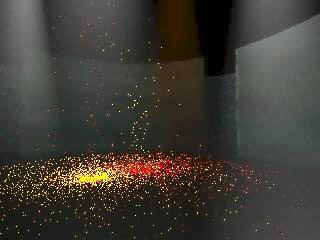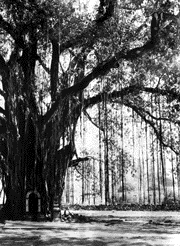
01 02 03 References
4
From Description To Performing
Wittgenstein's discussion of rule-following is a good starting point to
talk about a public space that is constructed on the fly by its participants.
By shifting attention from representation to performance, we shift the
focus of design from technologies of static representation (e.g. snap-shot
database schemas with data from forms), to technologies of creation and
performance. Of course, the social forms that we mentioned earlier all
have rules and conventions, some of which are followed pretty strictly
even if they are tacit. However we think of these rules not as chains
or shells encasing our activity, but rather as collective agreements arising
after the fact, emerging as conventions in the course of play. We think
of rules as constructed by newcomers to the game, for the newcomers' benefit,
as a way to summarize history. And we think of rules as scaffolding to
enable the players to improvise against a provisional framework, and reach
beyond the scope of their past activity if they desire.
Christopher Alexander, in his book, The Timeless Way of Building, viewed
each space as alive with events that were scaffolded by the geometry of
that space. Schematizing Alexander's description, the geometry of a place
gives a shape to the imagination of the inhabitant, the imagination inspires
the behavior, and the behaviors build the event. What sorts of repetition
and variety emerging in play can we expect in cyberspace?
5 Malleable Spaces
How can we construct alternate forms of public social action in our contemporary
mixed architectures built out of computation, digital media and steel?
What are some "techniques" that we might invent appropriate
to such hybrid architecture?
Translation and Allergy
In our globalized society, communities that used to be comfortably bounded
and closed are exposed to exogenous and even alien language. If language
is the appropriate medium of public activity, then translation becomes
all-important. Translation, the "Holy-Grail" of artificial intelligence
is a living process. Could translation become an organism living inside
the cyber-public space alongside more automatic processes?
When thinking about the immunological aspect of autopoeitic systems, students
of living and techno-scientific entities saw that the Internet could not
be transparent any more than an organism could live without skins. Under
the impact of plague messages, ISP's grew spam filters and firewalls like
skin to protect their members. But perhaps now we can build a more subtle
form of immune system, that lives in the interstitial fluid inside and
outside our hybrid bodies. An immune system that doesn't simply destroy
or eject alien objects, but modifies the habits of the body in order to
accommodate the presence of other living processes.
Static Space to Elastic Space to Responsive Space
The society has long ago started moving away from an aesthetic for a "built"
environment that assumes the neat separation of modernist design -- so
masterfully epitomized by Eames -- between user and object. There are
no clear rules or boundaries, no definitely resolved conflicts (Stuart
Hampshire) and no eternally fixed resolution of interests (Chantal Mouffe
& Ernesto Laclau) in a truly democratic realm. Given this, we argue
that public space should be created as heterogeneous domains and remain
polyphonic, that its totality cannot be grasped in any one schema.
The inhabitants of a medieval market could make sense of their environment
despite the lack of fixed total schema. Braudel remarked that in 14c Paris,
servants gauged when to rush out into the market not by watching clocks
(which didn't exist) but by attending to the varying quality of the mixed
roar of vendors and hawkers voices as they entered the streets of the
city. How can we achieve such collective intuition and pliability in today's
public spaces? What is the stuff, the fabric of society that we wish to
make elastic? This includes the communication networks, the flow of information,
systems of identification, systems of access to credit. What elasticity
means must be worked out in the course of playing the games of communicating,
identifying, buying and borrowing, but we want to point out only that
designing elasticity into public domain applies to the computational as
well as the physical.
This places the emphasis on transformation, rather than object. In the
modern era, much information and social technology is devoted to testing
for when an object is of type X. Now we are creating technologies that
transform an object from type X to type Y. Some of these technologies
will be computational, but other will be social conventions. It is essential
that we carry the design of public space not as a purely cybernetic, computational
design, but as a design of material, built, inhabited environment, which
is partially augmented by computational processes.
Such environments will become not only elastic but
responsive spaces.
6 Examples
If we, the inhabitants of these elastic, responsive, computationally augmented
public spaces wish to take responsibility for the shape and the behavior
of these environments, we will have to engage in experiments in real-time
and in life. We will have to take these spaces apart and reconstruct them
many times and across multiple cultural contexts.
Sponge and FOAM associations are dedicated to constructing public experiments
along these lines as a way to rapidly develop a feel for inhabiting such
hybrid spaces, through experiments such as:
Over the next few years, we will build these experiments first in Europe
and North America, and take what we learn into the domain of public, urban
design. We invite all interested in such experiments to join us.
 3d rendering of the TGarden environment
3d rendering of the TGarden environment
Temple in the trunk of a Banyan tree in India
back to sponge >